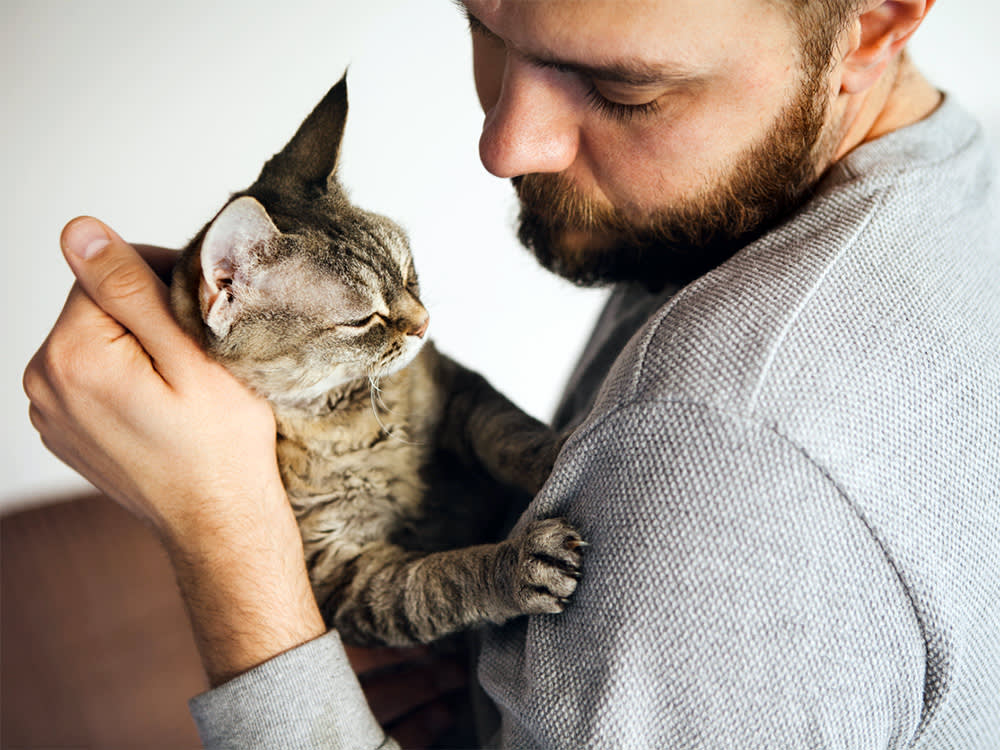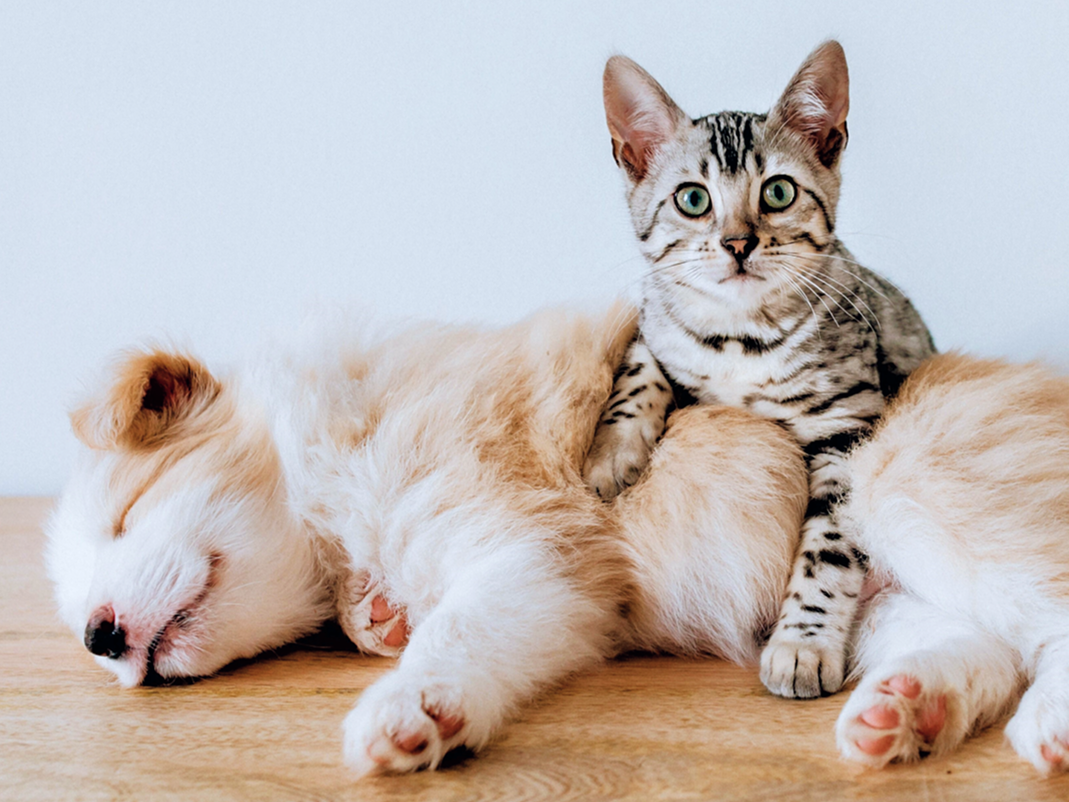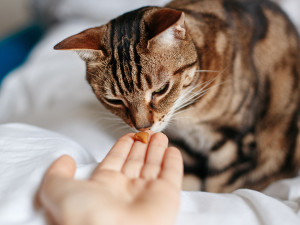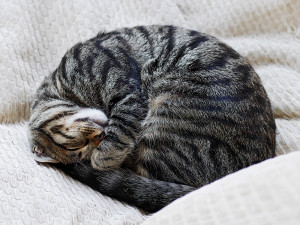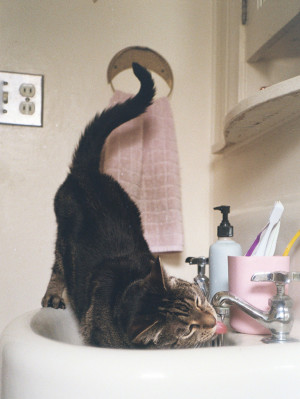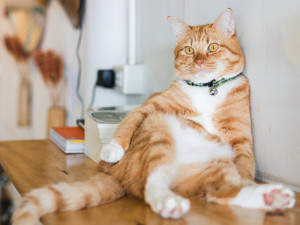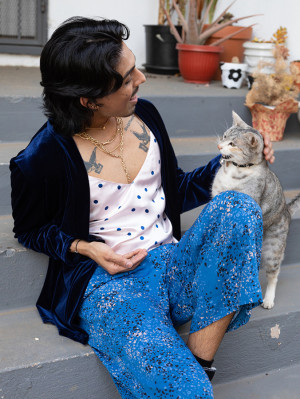Diabetes in Cats: Symptoms, Treatments, and Prognosis
Here are the signs to look out for.
In This Article:
Symptoms of Diabetes in Cats & Diagnosis Causes of Feline Diabetes Treatments for Diabetic Cats Possible Health Complications Caring for Diabetic Cats Outlook for Diabetic Cats
Diabetes mellitus is an endocrine disorder that affects the pancreas, insulin production, and blood sugar levels. In normal conditions, insulin is produced by the pancreas, a small organ near the stomach that releases digestive enzymes. Insulin allows the body to use glucose (sugar) for energy. In cases of diabetes, the body does not have access to enough insulin to properly process glucose, leading to hyperglycemia (high blood sugar).
There are two main categories of diabetes mellitus: Type 1 and Type 2. In Type 1 diabetes, the pancreas does not produce enough insulin. In Type 2 diabetes, the body is unable to use the insulin that is produced. Both forms of diabetes result in cells being starved for nutrients despite high blood sugar levels. Type 2 diabetes is the form most commonly diagnosed in cats.
Check out customizable policies from our friends at Lemonade Pet Insurance—so you only pay for what you need.
Symptoms and diagnosis of diabetes in cats
While the early signs of diabetes mellitus in cats can be subtle, ignoring them increases the risk for potentially life-threatening complications down the road. Early detection is key to preventing a crisis, so pet parents should know what the symptoms of diabetes in cats are. Common symptoms of diabetes in cats include:
How much do you spend on your pet per year?
Polyuria (increased urination)
Polydipsia (increased thirst)
Increased appetite
Weight loss despite a good appetite
Weakness, especially in the hind legs
Lethargy
Abnormal gait
Poor hair coat
Pot-bellied appearance
Vomiting
How is diabetes diagnosed in cats?
Diabetes in cats is diagnosed based on a combination of lab-work findings and clinical signs. When a vet is presented with a cat who is “drinking and peeing a ton,” blood work and a urinalysis are often the first diagnostic steps. While diabetes isn’t the only condition that can cause these symptoms, certain changes in lab work results will throw up diabetes red flags: hyperglycemia (high blood sugar) and glucosuria (glucose in the urine).
Glucosuria develops when blood sugar levels are so high that the kidneys can’t filter it out. Normally, the kidneys filter glucose (sugar) from the blood and allow it to be reabsorbed for energy. When blood sugar levels are high, it can exceed the kidneys’ capacity to filter the sugar out, leaving that excess sugar in the urine. But diabetes isn’t the only reason that a kitty’s blood sugar may be high — stress can also cause blood sugar to rise.
The stress of a trip to the vet can cause a temporary spike in blood sugar; this is called stress hyperglycemia. One of the dilemmas in diagnosing diabetes mellitus in cats is knowing if a high blood sugar is stress-related or not. Oftentimes, fructosamine is used to help figure that out. Fructosamine (another blood test) reflects a cat’s blood sugar levels over the past one-to-two weeks and can help confirm that a cat’s blood sugar has been elevated for a while and not just in the presence of a white coat.
Causes of feline diabetes
There isn’t a simple answer to the question “What causes diabetes in cats?”. But there are known risk factors.
Obesity: Obesity is one of the primary risk factors for diabetes in cats, as it can contribute to insulin resistance seen in Type 2 diabetes. An overweight cat is much more likely to develop diabetes than a lean cat.
Lack of exercise: Lack of physical activity can contribute to obesity and insulin resistance, increasing the risk for diabetes.
Concurrent diseases: Cats that have other health issues have a higher risk of developing diabetes. Conditions that are often seen alongside diabetes include chronic kidney disease, pancreatitis, chronic infection, and acromegaly (excessive growth hormone, often caused by a brain tumor).
Gender: Male cats are more likely to develop diabetes than female cats.
Age: Diabetes is more common in senior cats eight years and older.
Certain medications: Certain medications, like steroids, can cause elevated blood sugar levels and insulin resistance with prolonged use.
Genetics: The exact role that genetics plays in feline diabetes is unknown, but these breeds have a higher incidence: Burmese, Russian Blue, Norwegian Forest Cat, Abyssinian, and Tonkinese.
Treatments for diabetic cats
When making a plan on how to treat diabetes in cats, there are a few key goals to keep in mind. The ultimate goal is to achieve remission, which is possible with Type 2 diabetes. These treatment goals are usually achieved with a combination of insulin and diet. More specific goals of treatment are for cats:
To maintain a normal (or near normal) blood sugar level
To maintain a healthy body weight
To stop the clinical signs, like increased thirst and urination
Insulin therapy
Insulin administration is the primary treatment for feline diabetes. Insulin varies by type, duration of action, and concentration, so your veterinarian will discuss options to determine the best insulin for your cat.
Diet
Diet is an important component of managing diabetes in cats. A high-protein, low-carb diet is recommended. An appropriate diet can help assist with weight loss while helping to maintain muscle mass, increase insulin sensitivity, and keep cats feeling full. Other possible diet modifications may include feeding multiple meals each day (instead of free feeding) and offering canned food instead of dry kibble.
Oral medications
There are oral medications available that help to lower blood sugar levels without the use of insulin. Drugs like sodium-glucose cotransporter 2 (SGLT2) inhibitors prevent the kidneys from reabsorbing excess sugar. This allows excess sugar to be excreted in the urine, helping to keep blood sugar levels in check. Oral medications are prescribed far less often than insulin because they are not effective for all cases and not all diabetic cats are good candidates.
Close monitoring
Vigilance is a key aspect of managing a cat’s diabetes. It’s not uncommon for diabetic cats to need adjustments to their treatment, especially their insulin doses. Consistent monitoring for signs of improvement or potential complications is a crucial component of their overall care and treatment.
Are there health complications associated with feline diabetes?
Feline diabetes can lead to health complications if not managed properly. Potential issues include:
Diabetic ketoacidosis (DKA)
Diabetic ketoacidosis in cats is a life-threatening condition that develops when the body breaks down fat for energy because it is unable to use glucose. The process of breaking down fat produces ketones, which can make a cat very sick very quickly. Cats with DKA can experience vomiting, lethargy, severe metabolic abnormalities, and death.
Increased risk for infection
Persistently high blood sugar can weaken a cat’s immune system, increasing the risk for infection. Cats with diabetes are more prone to urinary tract infections due to high sugar levels in their urine.
Diabetic neuropathy
Unregulated diabetes can lead to diabetic neuropathy in cats, a condition where chronically high blood sugar causes nerve damage, usually to the hind limbs. This results in hind limb weakness and loss of coordination. A commonly reported finding in feline diabetic neuropathy is a plantigrade stance. This is when a cat walks or stands with their hocks close to the ground.
Slow wound healing
Delayed wound healing is a common issue in diabetic cats. High blood sugar makes blood thicker and sludgy, slowing down circulation and making it more difficult to pass through smaller arteries. Decreased circulation impacts the body’s ability to deliver oxygen and nutrients to places that need to heal.
Hyperglycemic hyperosmolar syndrome (HHS)
Hyperglycemic hyperosmolar syndrome is a condition where blood sugar levels are extremely high, leading to severe dehydration and mental disorientation. HHS is less common than DKA, but it is more likely to be fatal.
How to care for a diabetic cat
Managing a diabetic cat requires commitment and should not be half-assed. Having a diabetic cat often involves some pretty dramatic lifestyle changes for both cat and cat parent.
Give insulin injections
Parents of diabetic cats often have to quickly adjust to a new lifestyle of giving two injections per day. Veterinary staff members can help guide you through proper technique, even if needles give you the willies. Create a household schedule to ensure that doses aren’t missed or doubled up.
An important note: Parents of diabetic pets should know that there are different size syringes (U-100 and U-40) for different types of insulin. Know what size your cat needs and don’t switch them out — ever.
Make feeding adjustments
Diabetic cats may require changes to the food they eat and how they’re fed. It can be a struggle to get some cats to eat prescription food, so monitor food intake closely to ensure a cat has eaten before giving insulin. Don’t give insulin to a cat who won’t eat without discussing it with your vet.
Monitor blood sugar
Blood sugar monitoring is important to know that a cat is responding appropriately to insulin, especially when newly diagnosed. Cat parents can use a classic glucometer and/or get their kitty set up with a wearable blood sugar monitor that skips the need for needle pricks.
Be familiar with signs of hypoglycemia (low blood sugar). Even cats that are properly cared for are at risk for hypoglycemia if their insulin needs change. Signs of hypoglycemia include:
Weakness or lethargy
Dull mentation
Ataxia (wobbly gait)
Tremors or seizures
Coma
A diabetic cat showing signs of hypoglycemia should be offered food or glucose (honey, Karo syrup, dextrose gel) and taken to a veterinarian immediately. Untreated hypoglycemia in cats can be fatal.
Outlook for diabetic cats
Caring for a diabetic cat requires commitment, but the condition can be well managed with thoughtful care. And while there’s no cure, cats with Type 2 diabetes can (and do) go into remission, meaning they are able to maintain normal blood sugar levels without insulin.
Diabetic remission in cats typically occurs within the first few months of treatment. Factors that can impact the likelihood of remission include early diagnosis, accurate home monitoring, the cat’s condition at diagnosis, adherence to a proper diet, and the effectiveness of insulin treatment. While remission can be a positive outcome, it’s often not permanent. Cat parents should continue healthy habits and regular veterinary check-ups to maintain their cat’s wellbeing.
FAQs (People also ask):
What are the first signs of diabetes in cats?
Early signs of diabetes in cats that cat parents may see are increased thirst, increased urination, and increased hunger. With time, cat parents may also notice weight loss and poor coat quality.
Is a cat with diabetes in pain?
Diabetes itself is not painful to cats, but some conditions commonly seen with diabetes, like diabetic neuropathy, pancreatitis, urinary tract infections, or kidney disease, can cause discomfort.
How can you treat diabetes in cats without insulin?�
Non-insulin components of diabetes treatment are diet, weight loss, and oral medication. Some cats will continue to deteriorate without insulin and not all cats are candidates for oral medication. A vet should develop an individualized care plan.
